#and the gary russell book
Explore tagged Tumblr posts
Text
As requested by absolutely no one, my personal skiplist recommendation for the Eighth Doctor Adventures:
[ *Books that are more or less universally agreed to be excellent.
+Books I personally quite like that don't tend to make the top ten lists
-Books that are important enough that you shouldn't skip them, but imo kind of suck (don't yell at me if a book you like is on here, this is just my opinion)
Bolded books are arc important. ]
2. Vampire Science* 4. Genocide+ 6. Alien Bodies* 9. Longest Day- 11. Dreamstone Moon 12. Seeing I* 15. The Scarlet Empress* 17. Beltempest 19. The Taint- 21. Revolution Man+ 22. Dominion+ 23. Unnatural History* 25. Interference pt One: Shock Tactic 26. Interference pt Two: Hour of the Geek 27. The Blue Angel* 28. The Taking of Planet 5* 30. Parallel 59+ 31. The Shadows of Avalon 32. The Fall of Yquatine- 33. Coldheart+ 35. The Banquo Legacy 36. The Ancestor Cell 38. Casualties of War 39. The Turing Test* 41. Father Time- 42. Escape Velocity- 43. EarthWorld* 45. Eater of Wasps+ 46. The Year of Intelligent Tigers* 49. City of the Dead* 50. Grimm Reality* 51. The Adventuress of Henrietta Street- 52. Mad Dogs and Englishmen 54. Anachrophobia* 56. The Book of the Still* 58. History 101+ 59. Camera Obscura* 60. Time Zero 62. The Domino Effect- 63. Reckless Engineering 64. The Last Resort+ 65. Timeless 66. Emotional Chemistry 69. The Tomorrow Windows 71. The Deadstone Memorial+ 72. To the Slaughter 73. The Gallifrey Chronicles- PDA 73. Fear Itself* (Takes place between EarthWorld and Vanishing Point)
There are a number of books that are perfectly fine but nothing particularly special that didn't make the cut, as well as some kind of shitty books that did, as this is a skiplist to sort of whittle down the series to a somewhat more managable number while still keeping all of the arc essential books on the list. In my opinion, you could read every book on this list and not only not be confused by any of the arc stuff, but also come away not feeling like you've missed anything quintessential to the series.
And remember, this is my personal list, not speaking for anyone else's opinions about any of these, sorry if I included one of your favorite books among the 'shitty but significant' list, sorry if I skipped a book you love, yadda yadda yadda.
Happy reading! :D
#eighth doctor adventures#eighth doctor books#eighth doctor#megan whines into the empty abyss of cyberspace#honestly the real actual skiplist is just: skip The Eight Doctors the two dalek books and Placebo Effect#basically all of the others have at least one or two redeeming features each#y'know it's telling that of those it's three among the first ten when the series was still finding its feet#and the gary russell book#so even the really shitty ones aren't as bad as all that#and most of them are genuinely decent through absolutely excellent
20 notes
·
View notes
Text

Interesting dates from ‘The Torchwood Archives’ by Gary Russell
#torchwood#jack harkness#gwen cooper#owen harper#ianto jones#toshiko sato#suzie costello#gary russell#the torchwood archives#book
67 notes
·
View notes
Text

Doctor Who: The Star Beast by Gary Russell
Rating: ❤️❤️❤️❤️❤
#Doctor Who#The Star Beast#Doctor Who: The Star Beast#Gary Russell#books#book reviews#book recommendations
7 notes
·
View notes
Text
📚May 2024 Book Review (Part 3/3)📚

A slight change of plan: this review was supposed to include a french thriller, Le manuscrit inachevé by Franck Thilliez but since it's a trilogy and I read all three books it will be easier to speak of all three at once!
The Devil and the Dark Water by Stuart Turton

India, 1634. Detective Samuel Pipps is arrested by governor-general Jan Haan for reasons unknown. He is to be brought back to Amsterdam aboard the ship Saardam with his sidekick Arent Hayes, the governor-general, his wife and his mistress. As they board the ship, a leper appears and curse the ship before bursting into flame. With Pipps under arrest, Arent will have to solve this mystery by himself and make sure the ship reaches its destination, despite the lepers prediction.
Stuart Turton's The Seven Deaths of Evelyn Hardcastle has been a total hit for me earlier this year, I wanted to read another book of his. I couldn't get his latest book yet but this one was available!
The premise intrigued me, historical novel, a nautical story (with an author's note indicating that there were licenses taken, I knew next to nothing on the subject and the period so if there were, they flew past me) and a murder mystery with a pinch of horror. The balance is really well built, the ship and period create interesting obstacles to the investigation and nook and cranies to build a horror atmosphere. The main character is not the weathered detective who guesses everything and withhold his discovery à la Poirot, we get to see his deduction as he makes them, and it adds to the threat until the very end.
The characters are nicely drawn, I felt like I knew them already and had read about other cases they solved before. The author is great at giving tiny details that makes the characters and their relationships feel life-like, it made the ending hit that much harder.
Nonetheless I wasn't awed by the resolution: I had seen not of it coming, which is frequent eniugh in murder mystery but some aspects of it didn't feel like they had been set up upstream. It was also very down to earth, and I was expecting some supernatural elements to actually be supernatural in the end (I can't be much clearer without spoiling the end). That one is on me but it still tinted my feeling.
In conclusion, I found it a bit less awe-inspiring than The Seven Deaths of Evelyn Hardcastle but a nice read and a good thriller. Specialist of sailing, and the 17th century might find some historical incoherence but the book is really enjoyable.
The Hitchhiker's Guide to the Galaxy (The Hitchhiker's Guide to the Galaxy #1) by Douglas Adams

Arthur Dent is the last human survivor of planet Earth, destroyed to make way for a galactic highway. His friend Ford Prefect, an alien in disguise saved hit at the last second. Together they will explore the new planets, guided by Ford's Hitchhiker's Guide to the Galaxy and solve such grand questions as "where did all the ballpen go?" and "what is the meaning of life, the universe and everything?"
This is a cult classic and, as I get acquainted with SciFi and British absurdism, I gave it a go.
This was a wierd experience. Fun but wierd: I was a bitclost and Arthur's reaction to everything was so far out of what I would have felt that I had difficulty identifying with him. Other characters were really fun, I love Ford and Martin most of all. I admit most of the longer names are blurry for month after reading.
The different adventures were fun, I'm really growing fond of the absurd. Zaphod's ship and its propulsion system, the Impossibly Drive is such a funny yet efficient mechanism!
This was a fun discovery, I probably missed 48% of the references but I finally have context for that "42" easter egg on Google. The Restaurant at the End of the Universe is on the TBR for late September or October and I'm looking forward to it.
The Start Beast (Doctor Who 60th anniversary novelisation) by Gary Russel

The Doctor just regenerated, and this new face is strangely familiar. The coincidence is too much when he runs into Donna Noble, still amnesic. She can't remember him, it would be fatal; but as an alien called The Meep crashes in London and has to run to escape pursuit, the Doctor and Donna will run into each other again and work together to save planet Earth.
I was so excited for the 60th anniversary episodes!! David Tennant and Catherine Tate are such an awesome duo and Russel T Davis back on the team was a great news to me! I loved those new episodes and this one especially.
Aaaaand that's about all I have to say! Unfortunately, the book adds very little to the show. I hadn't rewatched it recently but it was still fresh enough that I didn't rediscover it through the book. I should have expected it. So yeah, novelisation doesn't add much but that's still one hell of an episode!
#book review#bookblr#books#stuart turton#the devil and the dark water#the hitchhiker's guide to the galaxy#thhgttg#douglas adams#doctor who#the star beast#doctor who novels#gary russel
3 notes
·
View notes
Text


X-Men Prime #1 (July 1995) by Marvel Comics
Written by Scott Lobdell and Frank Nicieza, drawn by Bryan Hitch, Jeff Matsuda, Gary Frank, Mike McKone, Terry Dodson, Ben Herrera, and Paul Pelletier, Al Milgrom, P. Craig Russell, Cam Smith, Mark Farmer, Mark McKenna, Tom Palmer, Tim Townsend, and Hector Collazo.
#X-Men Prime#X-Men#1995#Marvel Comics#Age of Apocalypse#Racing the Night#Scott Lobdell#Frank Nicieza#Bryan Hitch#Etsy#Vintage Comics#Comic Books#Comics#Mutants#Wolverine#Cyclops#Gambit#Cam Smith#P Craig Russell#Tim Townsend#Terry Dodson#Gary Frank#Jeff Matsuda
5 notes
·
View notes
Text
Covers Revealed for the Target Novelisations of Doctor Who's 60th Anniversary Specials
Covers Revealed for the Target Novelisations of #DoctorWho's 60th Anniversary Specials
The covers for the three upcoming Target novelisations of the Doctor Who 60th anniversary specials have been released, and though they don’t spoil anything from the plots or tell us too much about what each Fourteenth Doctor adventures has in store for us, they are nonetheless gorgeous. These covers have original art by Anthony Dry, who uses the pointillism technique to evoke the work of Chris…
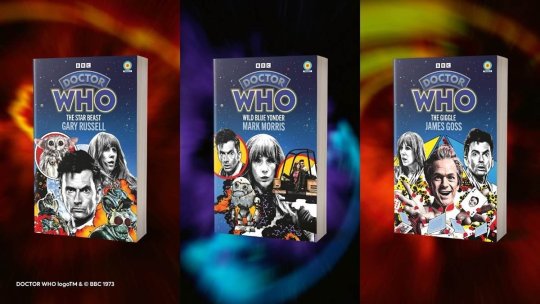
View On WordPress
#60th Anniversary#Anthony Dry#David Tennant#Fourteenth Doctor#Gary Russell#James Goss#Mark Morris#Neil Patrick Harris#RTD#Russell T. Davies#Target Books#The Celestial Toymaker#The Giggle#The Star Beast#Wild Blue Yonder
7 notes
·
View notes
Text
encyclopedia britannica has a picture ca. 2008 of DT as DW and my first thought was, that's outdated, then i remembered, and like. it's accurate yet still not, at the same time
#cloudy rambles#college things.#liron's grad school adventures#doctor who#trying to look at encyclopedia entries related to the show#most of them are outdated#using doctor who: the encyclopedia by gary russell feels a bit like cheating#though i completely forgot i had it until i saw a copy online#it was one of my thesis books
7 notes
·
View notes
Text

Gary Russell (Aka the guy who wrote Divided Loyalties) is the one writing the book version of The Star Beast,, I just KNOW we're getting academy content in these specials I can feel it in my guts in my bones
#i had to do a double take when i saw the post#MillRall will be real on screen him being the book writer has confirmed it to me#genuinely so excited. i know his track record with the books is iffy (see his creationist rant in that one EDA) but. man#just knowing hes had a hand in the 60th is enough to ensure that we are finally getting the content we deserve. after 24 years#Academy era fans better be fucking thrilled rn#gary russell#the academy era
7 notes
·
View notes
Text
Ranking Books I Read in 2022 - 35-31
35. Another Day In the Death of America: A Chronicle of Ten Short Lives - Gary Younge

What I Liked: Utterly painful and haunting. Very novel concept - taking a random day and chronicling all the gun deaths of young people in chronological order, some receiving a lot of attention, some barely receiving a mention in the local paper. Offered some fire quotes about American gun culture. What I Didn’t Like: Some parts could get a little dry and uninteresting. Final thoughts: Not for the faint of heart, but definitely something a lot more people should read to understand how much we give up in order to avoid passing any kind of effective gun control. TW gun violence and discussions of racism.
34. Not That Bad: Dispatches from Rape Culture - Roxane Gay

What I Liked: A wide range of essayists offered new perspectives on this very sensitive subject. Another book full of absolutely fire quotes. What I Didn’t Like: Ally Sheedy’s essay was pretty fucking tone deaf. The essay regarding migrants who’d experienced sexual violence was dry as all hell and mostly just quotes statistics, and that’s not something you really should do when you’re trying to draw attention to a problem like this. Final thoughts: Hard to get through, but ultimately a great resource mostly full of thought-provoking, heartfelt works. TW for sexual violence of all kinds.
33. Monsters in the Closet: Homosexuality and the Horror Film - Harry M. Benshoff
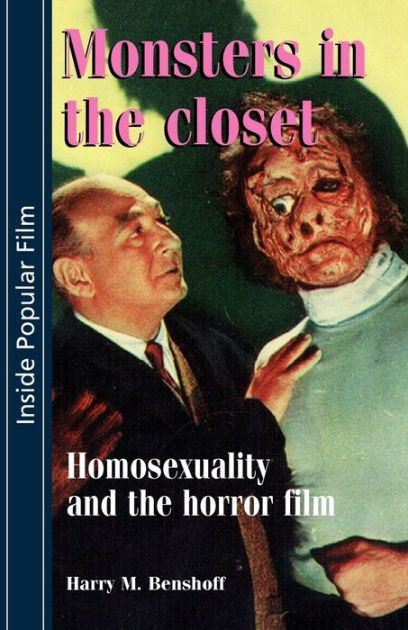
What I Liked: An amazing resource full of very interesting history and analysis. Bulked up my to-watch list. The section on Vincent Price made my entire life because he’s my hero. What I Didn’t Like: Some of the language got a little too academic and would lose me, but that honestly wasn’t very often. Final thoughts: A must-read for queer horror film lovers, that truly codifies why the genre resonates with us so much. TW discussions of homophobia.
32. Just Like Home - Sarah Gailey
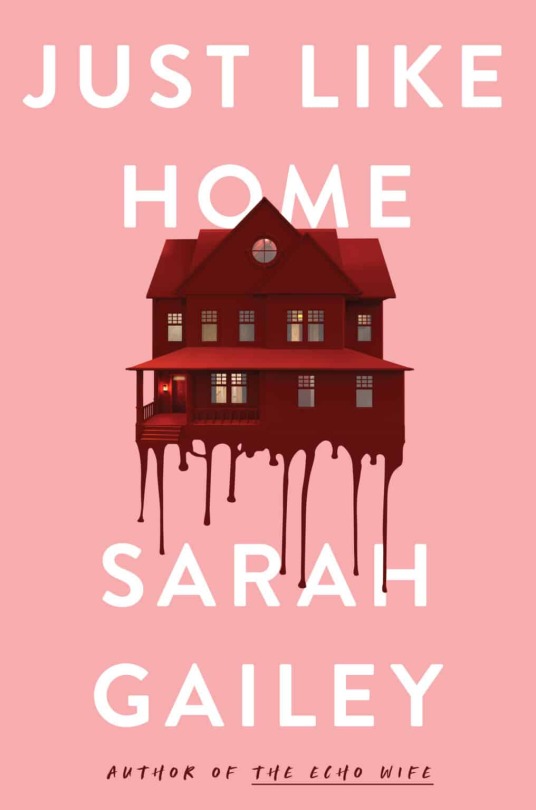
What I Liked: Phenomenal language. Intensely creepy atmosphere. Daphne is an amazing villain. What I Didn’t Like: Vera is kind of bland, and we don’t really learn much about her as an adult. James became kind of a mustache twirling baddie and it wasn’t incredibly believable in a book that had such complex characters up to this point. Final thoughts: A little rough around the edges, but still a refreshing take on the haunted house story.
31. Exit, Stage Left: The Snagglepuss Chronicles - Mark Russell
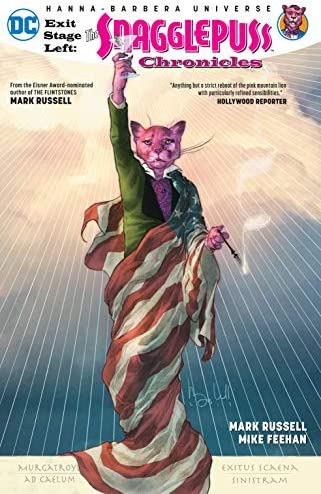
What I Liked: A surprisingly realistic look into life around this time period, you can tell Russell did a lot of research. As crazy as the concept is, these characters actually do make for compelling reading. What I Didn’t Like: The subplot with the chairwoman of the committee kinda fizzled out and died. Final thoughts: As absolutely ridiculous as it sounds to take classic Hanna-Barbara characters and put them in a gritty historical drama about McCarthy America, it’s just sincere enough to work. TW for homophobia and suicide.
#ranking books 2022#another day in the death of america#gary younge#not that bad#roxane gay#monsters in the closet#harry m. benshoff#just like home#sarah gailey#exit stage left: the snagglepuss chronicles#mark russell
3 notes
·
View notes
Text
New "The Tomorrow People" novels launch this week
Oak Tree Books and Chinbeard Books have just released The Tomorrow People: The First One, the first book in a new collection of standalone novels based on the original version of the cult sci-fi series, first screened in the UK in the 1970s
Oak Tree Books and Chinbeard Books have just released The Tomorrow People: The First One, the first book in a new collection of standalone novels based on the original version of the cult sci-fi series, first screened in the UK in the 1970s. Cover by Robert Hammond The First One by Gary Russell will be published this week, on Thursday 18th July, and is available to pre-order in paperback,…
#Barnaby Eaton-Jones#Chinbeard Books#David Darbyshire#downthetubes News#Gary Russell#Iain McLaughlin#Joseph Lidster#Oaktree Books#Rebecca Levene#Robert Hammond#Roger Price#The Tomorrow People
1 note
·
View note
Text
Book Review: Doctor Who: The Star Beast by Gary Russell
Book Review: Doctor Who: The Star Beast by Gary Russell #ReaderCommunity #ReadingCommunity #BookCommunity #Reading #Books #BookReview #Review #DoctorWho #60thAnniversary #TheStarBeast #DonnaNoble #Anniversary #BBC #Novelisation #Novelization
Hi everyone! How are you all? Today is Friday, and it’s time for another review. This time, I am reviewing The Star Beast by Gary Russell, the first novelisation of the three Doctor Who 60th Anniversary Specials. Doctor Who: The Star Beast was first published in ebook format in November 2023 and in paperback in January 2024 by BBC Books and is 160 pages long. The PlotThe Doctor, an alien from a…

View On WordPress
0 notes
Text
Round One, Bout Eleven
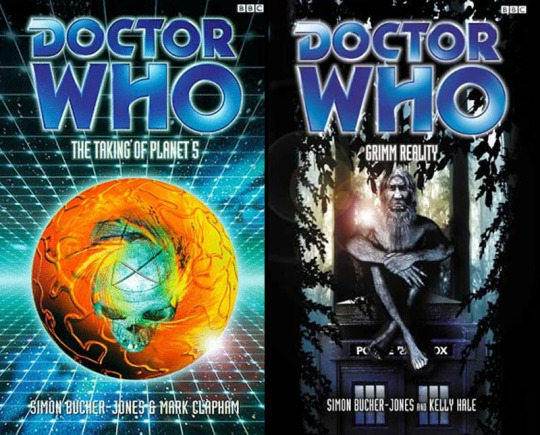

#eighth doctor adventures#eighth doctor#eighth doctor books#simon bucher jones#gary russell#EDA writer tournament
17 notes
·
View notes
Text

Doctor Who: The TV Movie by Gary Russell
Rating: ❤️❤️❤️❤️❤
#Doctor Who: The TV Movie#Doctor Who#The TV movie#Gary Russell#books#book recommendations#book reviews
4 notes
·
View notes
Text
ianto and bisexuality.

being unsure, questioning yourself all the time, being told to label yourself and that same label later being “unvalid”. the stereotypes, the accusations of transphobia and the “best of both worlds” are the reasons why some people to this very day struggle with accepting themselves and ianto is a primary example of that. he doesn’ t refuse his sexuality nor he is ashamed of it; what upsets him is how hard it is for him to live in a world where others’ opinion on you (labels) are more important that the person themselves.
from: torchwood the twilight streets (book) from gary russell
#torchwood#jack harkness#ianto jones#toshiko sato#tosh sato#owen harper#gwen cooper#john hart#doctor who#whoniverse#lgbtq#lgbtqia#bisexual
129 notes
·
View notes
Text



Cyberspace 3000 #1 (July 1993) by Marvel UK
Written by Gary Russell, drawn Steve Tappin and Michael Eve, cover by Liam Sharp and Andy Lanning.
#Cyberspace 3000#Marvel Uk#Marvel Comics#1993#Glow in the Dark#Galactus#Etsy#Comic Books#Comics#Vintage Comics#Gary Russell#Steve Tappin#Michael Eve#Liam Sharp#Andy Lanning#Sci-Fi
0 notes
Text
The Three Doctor Who 60th Anniversary Specials to be Adapted Into Target Novelisations
The Three #DoctorWho 60th Anniversary Specials to be Adapted Into Target Novelisations
The three upcoming Doctor Who 60th anniversary specials will be turned into Target novelisations, the first (and perhaps only) stories for David Tennant’s Fourteenth Doctor! Each book — The Star Beast by Gary Russell, Wild Blue Yonder by Mark Morris, and The Giggle by James Goss — will have specially commissioned cover artwork by the regular Target novel artist, Anthony Dry, inspired by the work…

View On WordPress
#60th Anniversary#Anthony Dry#Catherine Tate#David Tennant#Donna Noble#Fourteenth Doctor#Gary Russell#James Goss#Neil Patrick Harris#Target Books#The Giggle#The Star Beast#Wild Blue Yonder
2 notes
·
View notes